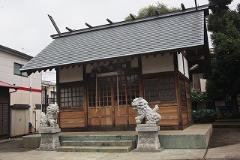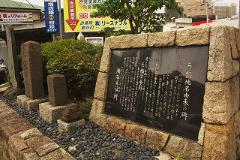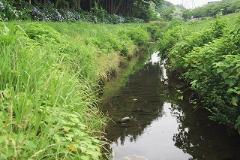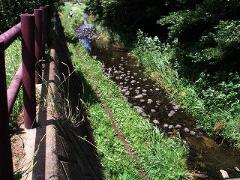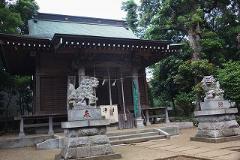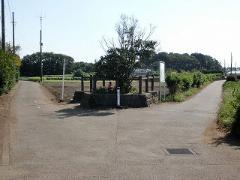Here's the text.
Waterside course of Izumi River
Last Updated April 10, 2020
The Izumi River, which runs north-south through Seya Ward, originates from the forest of Seya, has six waterfronts, including the waterside of Futatsu Bridge, the waterside of Miyazawa Fureai, and the waterside of Higashiyama. In addition, there are Futatsu Bridge Shinmei Shrine and Miyazawa Shinmei Shrine, where you can feel the history, making it an ideal course for family picnics.
Waterside course map of Izumi River
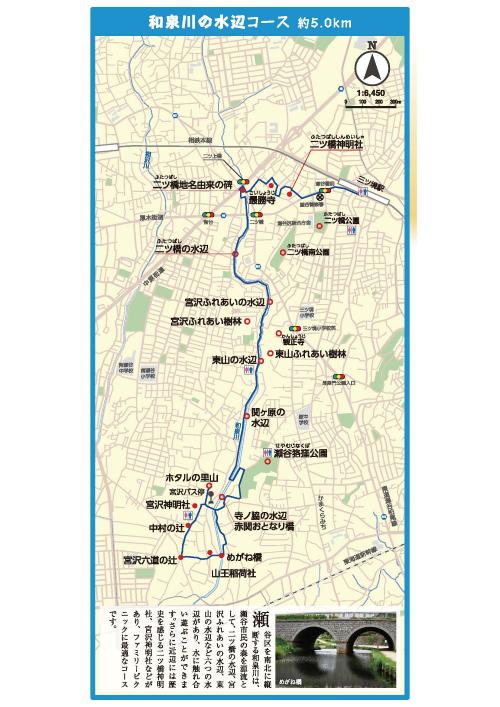
Highlights of the waterside course of Izumi River
| Name of historic sites, etc. | Information |
|---|---|
| Futatsu Bridge Shinmei Shrine | In the past, it was said that he dedicated the seedlings of Sakaki in Kamakura Hachimangu Shrine and prayed for the protection of the village as a shrine, and has been worshiped as a sacred tree since then.
|
| Monument derived from the name of Futatsu Bridge | Waka (1613), which is said to have been written by Ieyasu Tokugawa engraved on the stone monument (1613), "Futatsu Bridge Kana passed over Shimizugawa of Shimijimi and Kiyo flow" and Ishibashi memorial tower (1856 (1856)), etc. It is said that the name of Futatsu Bridge is derived.
|
| The waterfront of Higashiyama Fureai Forest and Higashiyama | There is a walking path along the river in the Higashiyama Fureai Forest, where you can enjoy the hydrangea of Seya Ward planted in October 1999 to commemorate the 30th anniversary of the Seya District System.
|
| The waterside of Sekigahara | It is the first waterside to be maintained as the waterside of the Izumi River, where various birds inhabit and it is a place to relax and feel the hometown.
|
| Shinmei Miyazawa | During the Kanei era of the Edo period (1624-1644), Shigekatsu Hagimoto gave the land of Miyazawa to make up for the shortage of known land, and emigrated the villagers of Kamiyabe Village (Totsuka Ward) under his control and cleared it.
|
| Tsuji of Miyazawa Rokudo | It is a place where the six roads extend radially, and is the junction of the road connecting Hoshi no Tani Kannon and Komyoji Kannon at Bando 33 Kannon Fudasho.
|
You may need a separate PDF reader to open a PDF file.
If you do not have it, you can download it free of charge from Adobe.
![]() To download Adobe Acrobat Reader DC
To download Adobe Acrobat Reader DC
Inquiries to this page
Seya Ward General Affairs Department Regional Promotion Division Residents' Cooperation Promotion Section
Telephone: 045-367-5694
Telephone: 045-367-5694
Fax: 045-367-4423
Email address: se-kyoudou@city.yokohama.jp
Page ID: 153-777-759










